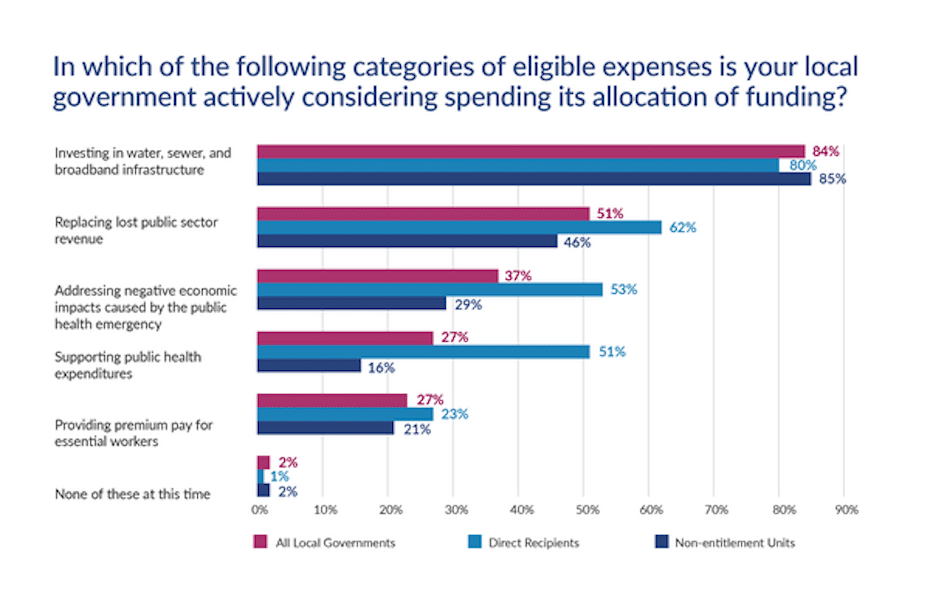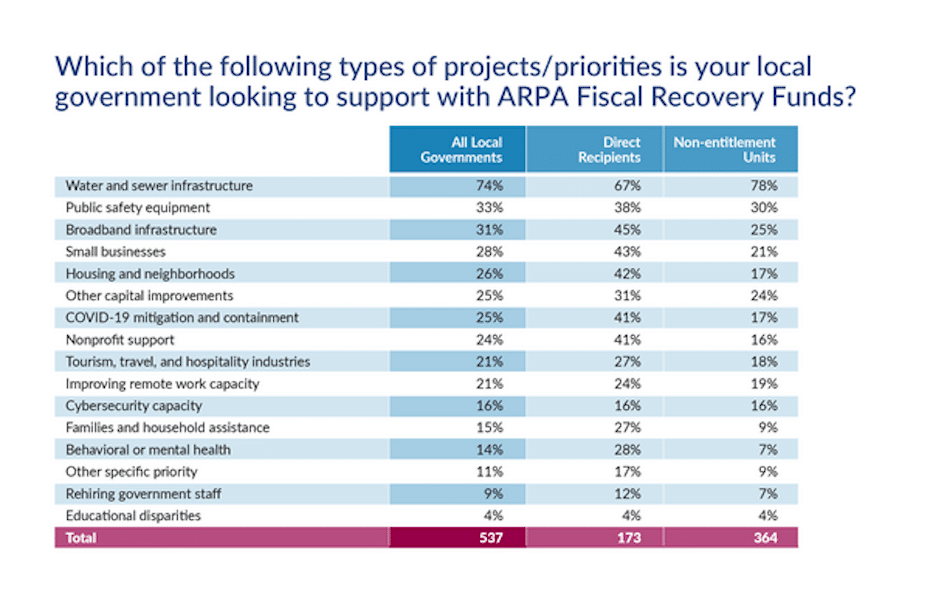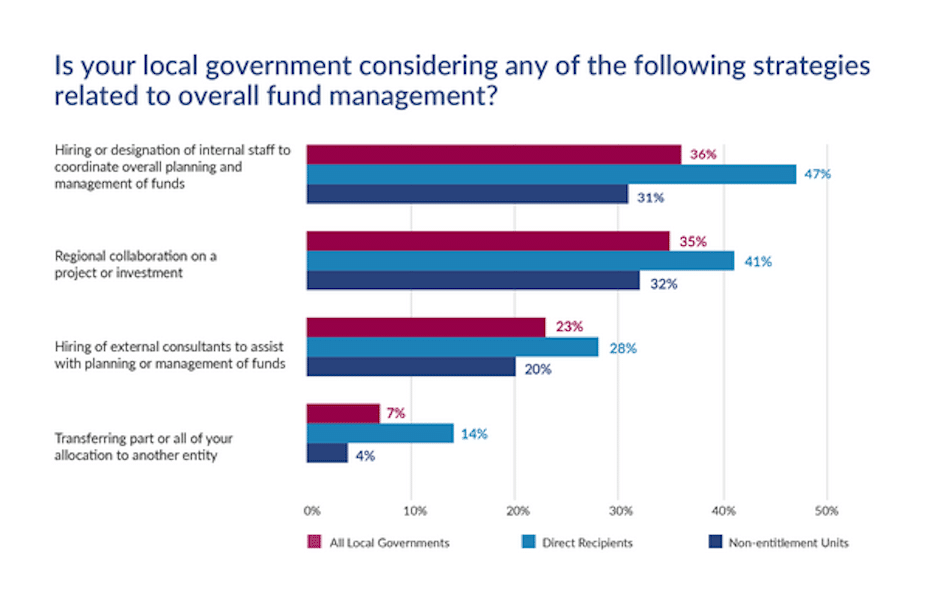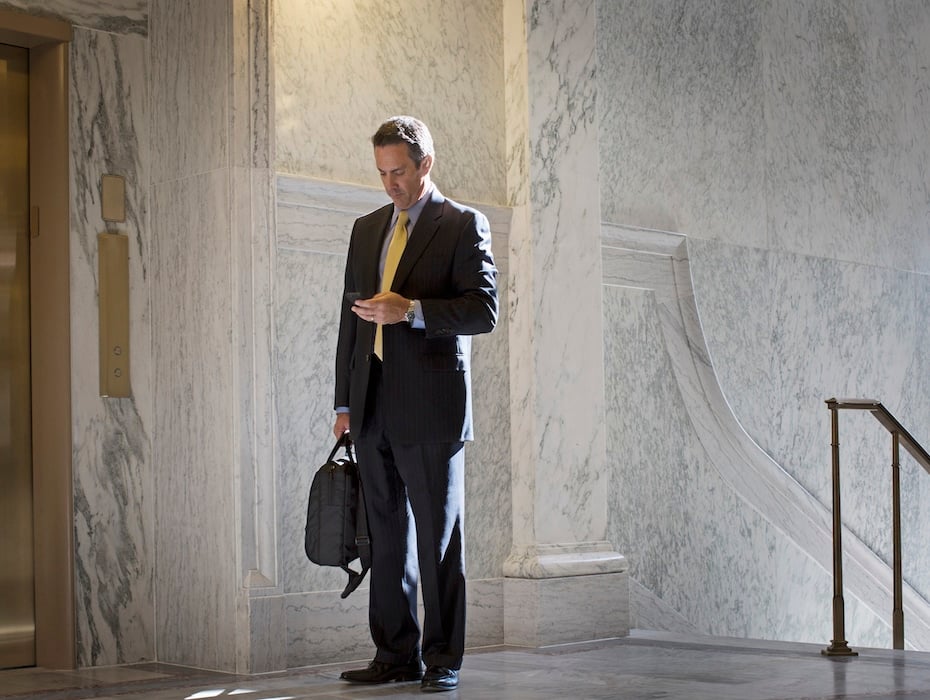Highlights
- CARES provided $2.2 trillion in stimulus money, and the American Rescue Plan included $130 billion in flexible funding for capital projects.
- Project prioritization is critical for city and county governments to optimize relief funds.
- City, town, and county managers identified water/sewer and broadband as priorities.
- Plans for relief fund management vary from internal staff to regional collaboration, outside consultation, or fund allocations to other entities.
👀 Why do 63% of government leaders surveyed feel their internal communications initiatives are now very important? Grab our government research report to get some answers.
COVID relief bills have created a massive, rare infusion of capital project funds that city and county governments can access. The Coronavirus Aid, Relief, and Economic Security Act, or CARES Act, and the American Rescue Plan Act (ARPA) made available billions of dollars across a variety of category-specific initiatives.
As your city or county government evaluates the most important projects on the horizon, consider opportunities for which allocated funds are available. In some cases, governments might move up plans for projects that offer relief funds to take advantage of the financial support.
COVID relief funds: allocations and prioritizing projects
The following is an overview of key allocations from the COVID relief legislation and how you might use these funds to complete vital projects in your community.
Overview of COVID relief funding
The $2.2 trillion CARES Act was passed by Congress in March 2020, as a response to the COVID pandemic. The American Rescue Plan Act followed in March 2021. Deadlines have passed to apply for CARES funding, but many city, county, and state governments requested funding and are now developing project plans.
The ARPA was a more flexible, direct COVID relief funding bill with a sum of $130 billion intended to support the revitalization of housing, healthcare, work, business, transportation, and education. Though the money was allocated to particular project areas, local governments have a lot of flexibility when deciding how to best use the funds to support their communities.
Some of the deadlines have passed for local governments to apply for ARP funding. There is still time to submit requests for funding in some of the project categories.
Types of projects under consideration
The following graphs show the result of surveys conducted by ICMA in September 2021. There were 530 town, city, and county managers that participated.
In the first graph, respondents identified projects their government was considering paying for with COVID relief funds. The responses are broken down into local governments, direct recipients, and non-entitlement units. Responses were consistent regardless of funding type.
Overwhelmingly, managers indicated that sewer and water and broadband infrastructure were top priorities. COVID relief funding and funding from the November 2021 Infrastructure Bill were directed at expanding broadband internet access. Over half of respondents also indicated that replacing lost public sector revenue to cover budgetary shortfalls was a priority. The other three common responses centered on health care, including offsetting the negative economic outcomes from the pandemic, public health investment, and premium pay for essential workers.

The next graph shows the results from a question about more specific project types being considered with American Rescue Plan Act funds. It similarly shows water and sewer infrastructure, along with broadband infrastructure, as top priorities for local governments, direct recipients, and non-entitlement units. Public safety, small business, housing, and neighborhoods were among other projects most noted by responding managers.

Strategies for optimizing COVID relief money
One more chart from the ICMA shows the results of a question regarding how managers intend to facilitate their use of COVID funds. No option was universally identified or selected by a majority of respondents. Hiring new staff or using existing staff was a popular choice, as was collaborating regionally on a project.
Some managers indicated they would have a more hands-off approach. They would either bring on consultants to assist with fund management or allocate the funds to other entities for use.

Prioritizing the right projects
The real challenge for city and county government officials is deciding which projects to prioritize based on COVID funding opportunities. Local governments have 10- to 20-year plans that include various projects. Some are more emergent or urgent, whereas others normally get worked in over time as budgets allow.
The COVID funds create a unique dilemma because some of the projects the money can support may not currently sit at the top of your priority list. It may make sense to bump certain projects up to leverage this one-time financial support while it is still available. The relief funding bills include deadlines for spending the requested and approved money for projects.
Physical infrastructure projects, worker support initiatives, housing assistance, or other projects like these are right for some cities and counties. Many communities are prioritizing broadband expansion, given the significant money earmarked for digital infrastructure. The objective is to eliminate the digital divide between people in low-income and high-income areas or rural versus urban areas.
Managers responding to the ICMA survey were also asked whether they intended to prioritize existing projects (pre-COVID) or new projects to leverage relief funds. Slightly more respondents (44 percent of all local governments) said they would use relief funds for pre-COVID projects. One-third (33 percent of all local governments) planned to use the money for recovery-specific projects aligned with the American Rescue Plan Act.

The case for prioritizing digital communications infrastructure
There are a number of ways that your city or county can make effective use of COVID relief funds. The options identified here are among the common ones being implemented by other local and county governments. The key to success is finding a project that effectively benefits your citizens while leveraging rare access to federal money.
The digital infrastructure priorities evidenced within the funding present some of the best project options because improving digital infrastructure can have an enormous impact on city or county internal processes in terms of efficiency and significant impacts on the citizens served by city or county agencies terms of community engagement.
RingCentral for Government is a comprehensive cloud-based communications solution that boosts communication in any agency or office. It empowers your people to collaborate safely and seamlessly across all key channels internally and engage securely with your community externally. With RingCentral, your city or county has an all-in-one platform that includes phone, messaging, video, and contact center capabilities. RingCentral’s centralized app simplifies your entire communications strategy, enabling a more nimble, responsive agency.
For more insight on the benefits of RingCentral, see our government solutions today.
Originally published Apr 05, 2022, updated Dec 30, 2022





